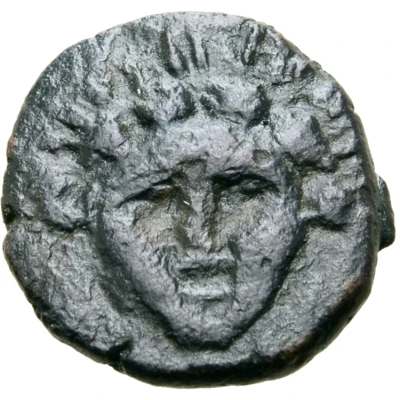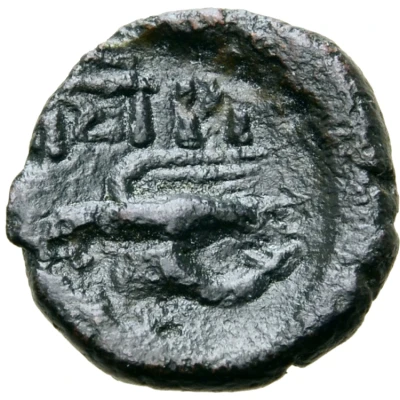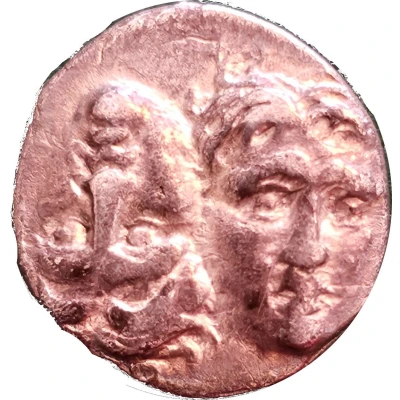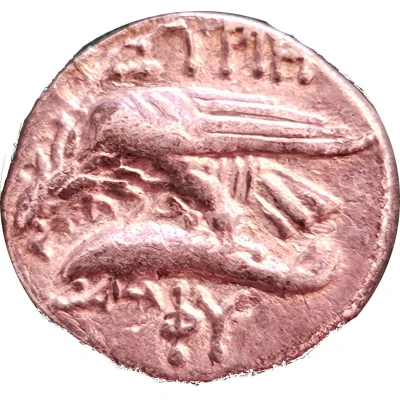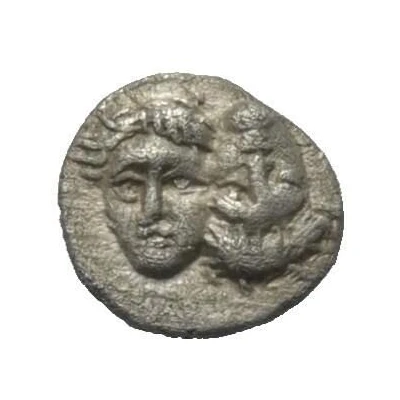
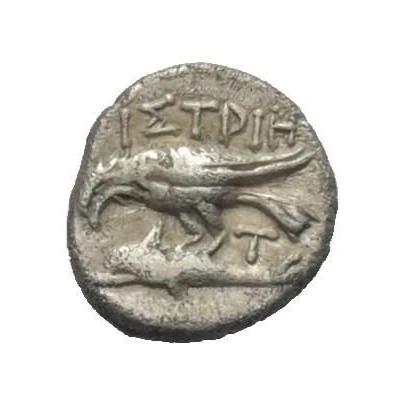

© Solidus Numismatik e.K.
Hemiobol 340 BC - 313 BC
| Silver | 0.5 g | 9 mm |
| Issuer | Istros (Moesia) |
|---|---|
| Type | Standard circulation coin |
| Years | 340 BC - 313 BC |
| Value | Hemiobol = ½ obol = 1⁄12 Drachm |
| Currency | Drachm |
| Composition | Silver |
| Weight | 0.5 g |
| Diameter | 9 mm |
| Shape | Round (irregular) |
| Technique | Hammered |
| Orientation | Variable alignment ↺ |
| Demonetized | Yes |
| Updated | 2024-10-10 |
| Numista | N#371509 |
|---|---|
| Rarity index | 100% |
Reverse
Sea eagle facing left, grasping dolphin with talons.
Script: Greek
Lettering:
ΙΣTPΙH
T
Translation: Istros
Edge
Plain
Interesting fact
The Hemiobol coin was used in the ancient Greek city of Istros (nowadays known as Istanbul) during the 4th century BC. It was made of silver and weighed only 0.5 grams, making it one of the smallest silver coins in circulation at that time. Despite its small size, the Hemiobol was an important coin in the ancient Greek world, as it was used for everyday transactions and was a symbol of the city's prosperity and trade.
